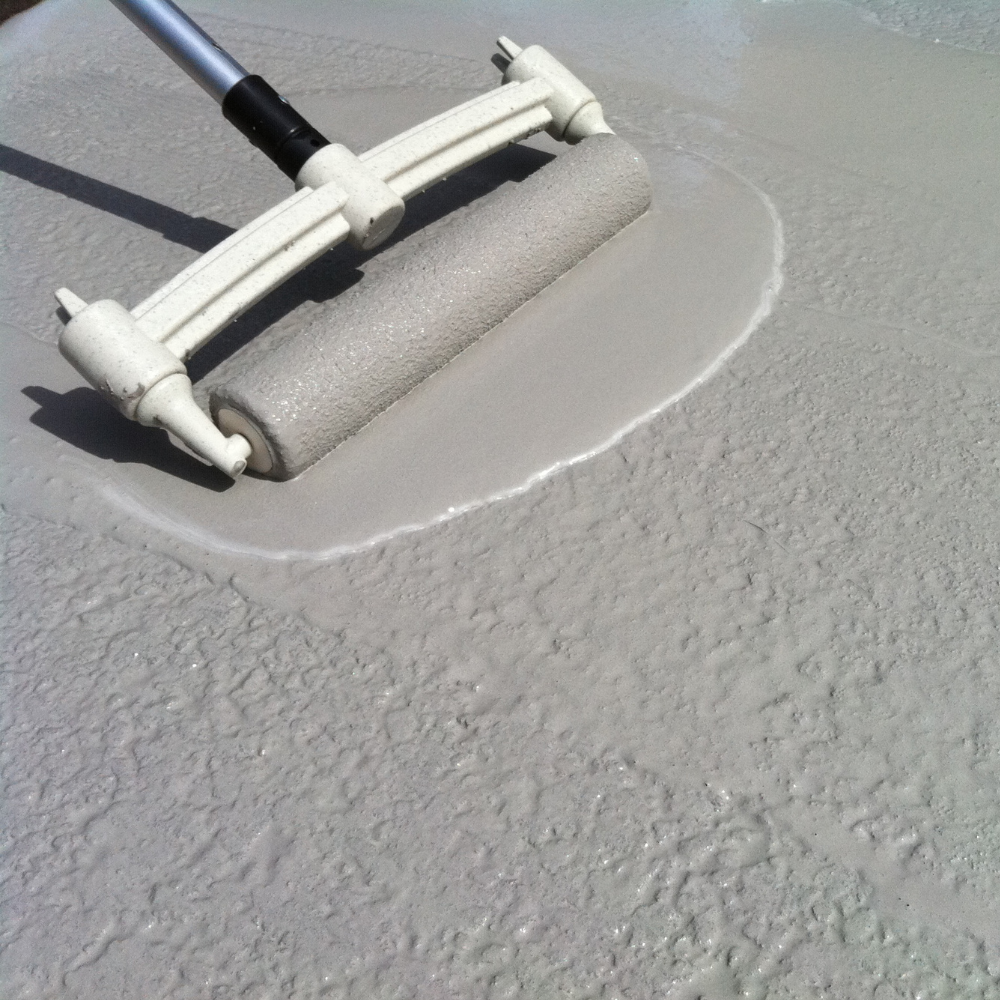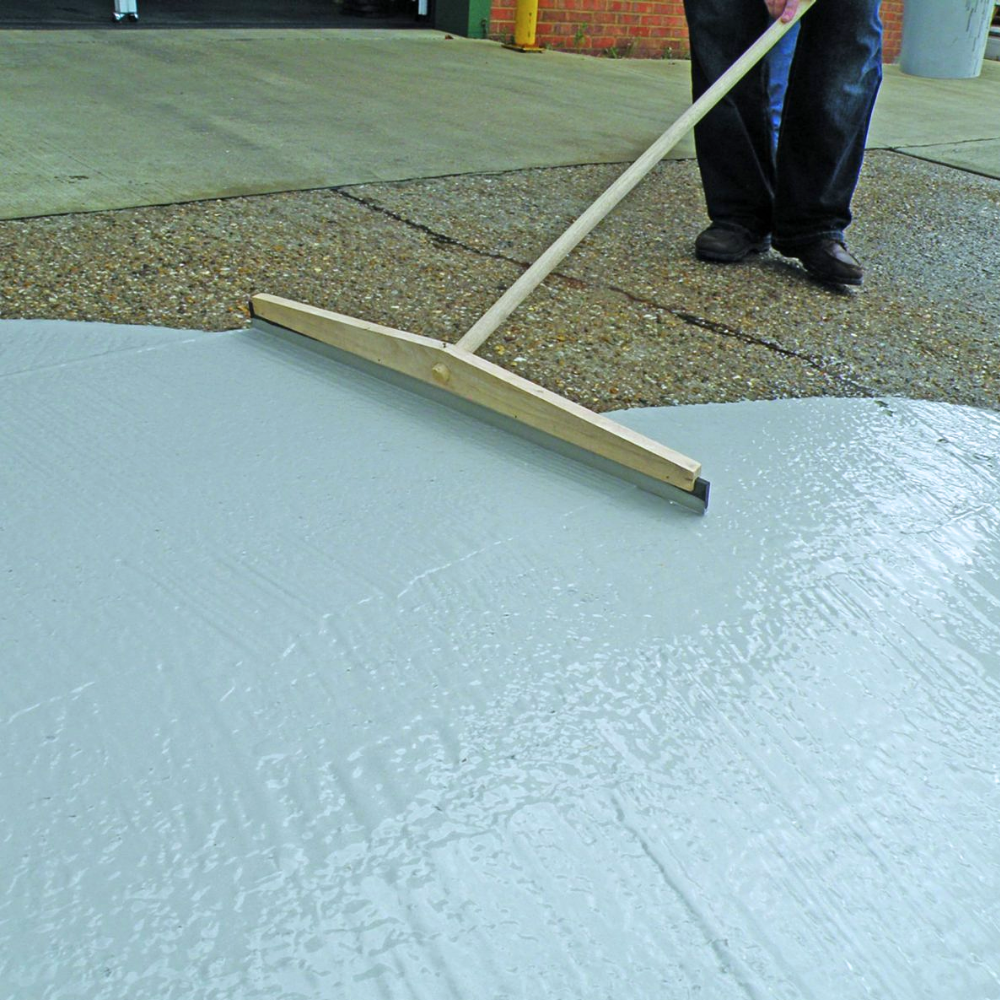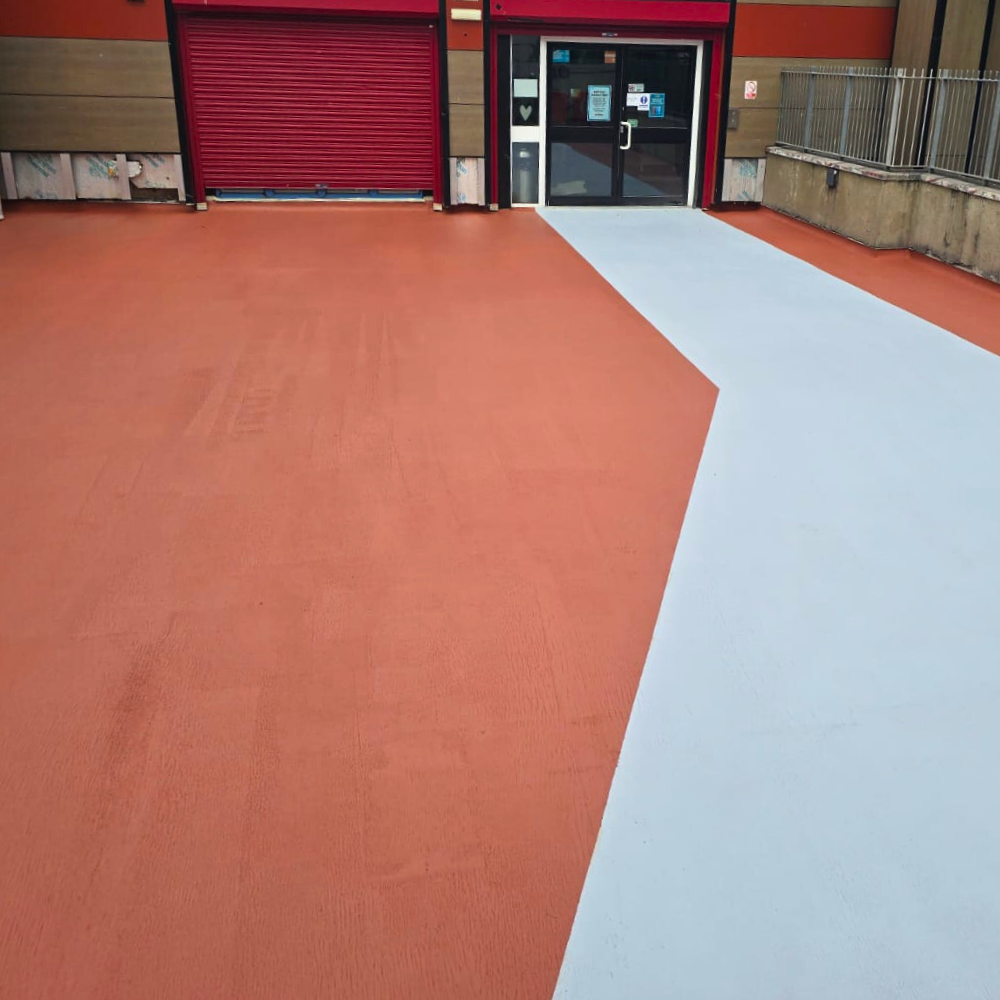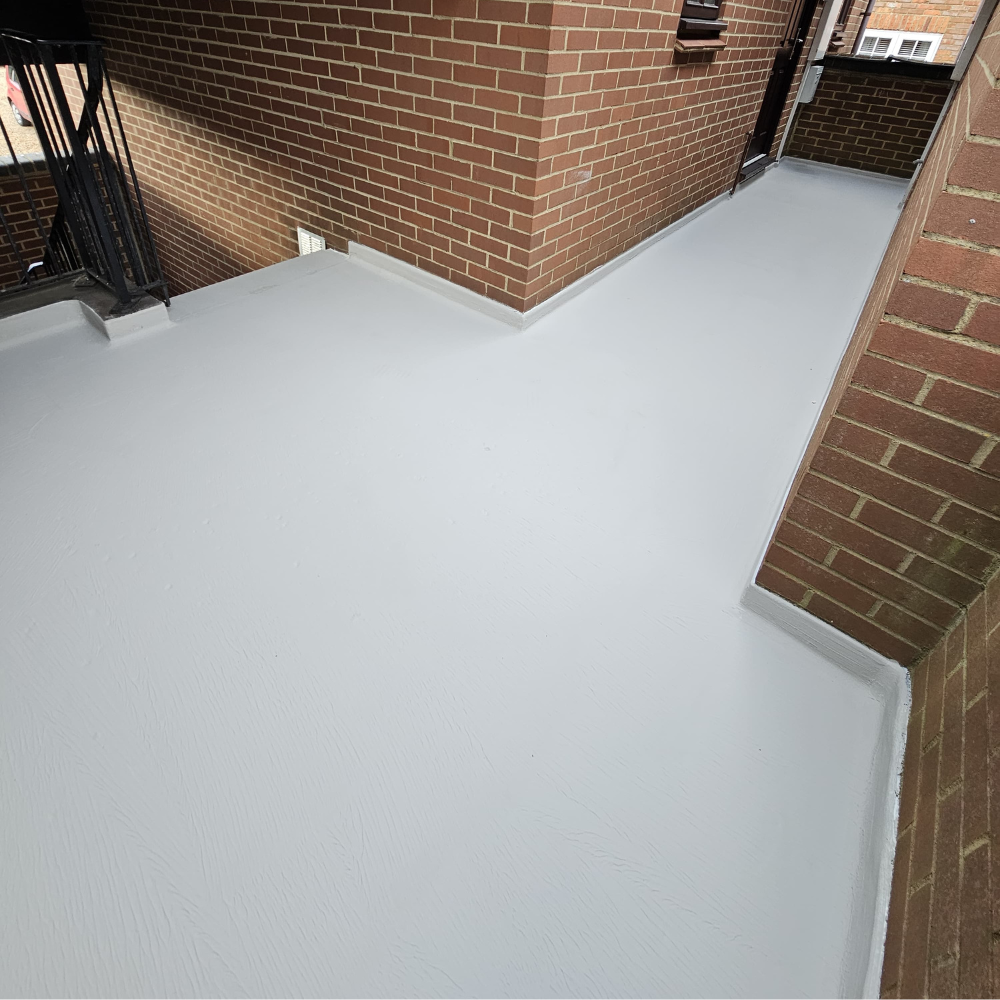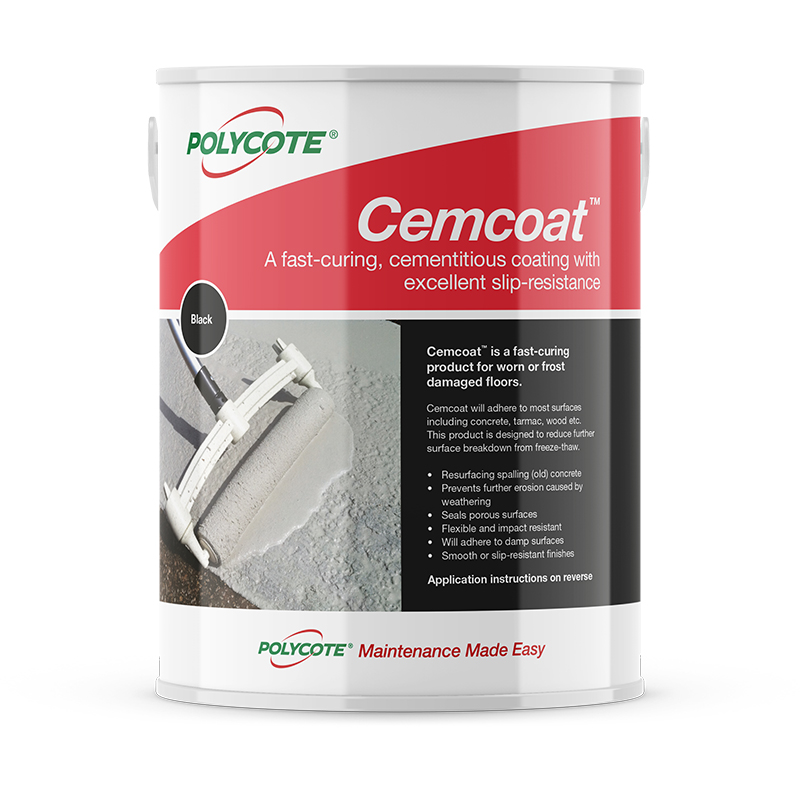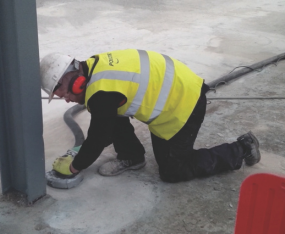Surface Preparation:
Thorough substrate preparation is essential.
The substrate must be sound, clean and free of loose or friable materials, dust, chalk, oil and grease contamination, mould or algae. Remove any oil or grease using Polycote Degrease IT. Any damaged areas should be repaired and primed – please contact the technical team for further advice. New concrete should be at least 4 weeks old and the weak dusty laitance should be removed using Polycote Etch IT.
If applying to steel in damp or corrosive environments, a corrosion inhibitive primer should be applied before application of the membrane
Stage 1 – Cemcoat Base:
Mixing:
The ideal mixing tool is a slow speed drill fitted with a multi action mixing paddle.
The Cemcoat Base unit of material supplied is based on the standard mix of 5 litres of liquid to 12.5 kgs of powder (i.e. 1 part liquid to 2.5 parts of powder) but it should be noted the ratio of liquid to powder can be adjusted to suit individual applications in terms of surface, usage and prevailing temperature. The ratio can vary from 1 part of liquid to between 1.8 up to 3.75 parts of powder.
ALWAYS add the powder into the liquid – slowly, continually mixing until all the powder to be used is added. Continue mixing for a further 2 to 3 minutes ensuring there are no lumps in the mix. The final consistency should be similar to that of a thick cream.
Please note: Cemcoat Base is a balanced formulation and no additional water should be added to the mixture.
Application:
Before application of Cemcoat Base to horizontal or vertical surfaces, ensure that porous surfaces are damp, this can be done simply by spraying a hose over the area. The area must only be damp and no puddles should be present. Ensure any standing water is removed.
Please note: all warm surfaces are best cooled by dampening down with water before application of the Cemcoat Base. Should you wish to apply a further coat of Cemcoat, a very light spraying of water will again, aid the spread of the material.
CAUTION: Do not apply Cemcoat Base on hot surfaces or at times of very strong sunlight and high temperatures as this could accelerate the drying of mixed concrete and produce a very rapid cure of the applied material. Although very rare, this situation can subsequently cause hairline cracking.
Cemcoat Base is extremely simple to apply using either a brush, roller, trowel or squeegee.
From the mixing vessel pour out a quantity of material that can be easily and uniformly spread. When completing larger areas, we advise using our straight bladed squeegee, spreading the Cemcoat out evenly and to the desired thickness / coverage rate. Using a roller and whilst still wet (immediately) , roll out the Cemcoat to a uniform finish. Take care when rolling that each ‘roll’ is pulled in a neat straight line to achieve the final texture / slip resistance required. Repeat the mixing and application method until the selected area has been completed.
Over coating can be completed as soon as the first coat has dried (between 4 and 6 hours according to climate conditions).
Cemcoat Base should not be applied where the air or background temperature is likely to fall below 5°C or where there is a risk of rainfall on exposed applications prior to full curing being achieved.
Stage 2 – Cemcoat Sealer:
Mixing:
The ideal mixing tool is a slow speed drill fitted with a multi action mixing paddle.
The Cemcoat Sealer unit is made up of two pre-measured parts and we do not recommend splitting this down to make up smaller units.
Please note: Cemcoat Sealer is a balanced formulation and no additional water should be added to the mixture.
Application:
Before application of Cemcoat Sealer to horizontal or vertical surfaces, ensure the Cemcoat Base is fully cured and surface is clean, solid and dry.
Cemcoat Sealer is extremely simple to apply using either a brush and/or a roller.
From the mixing vessel pour out a quantity of material that can be easily and uniformly spread to the desired thickness / coverage rate.
The Cemcoat Sealer should not be applied where the air or background temperature is likely to fall below 5°C or where there is a risk of rainfall on exposed applications prior to full curing being achieved.


